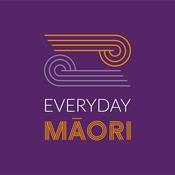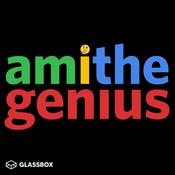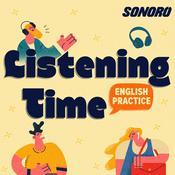4 episodes

Unit 1.2 Delve into detail_TB
20/2/2025 | 10 mins.
Delve into detail

Unit 1.2 Delve into detail_LB
17/2/2025 | 3 mins.
Briefing Document: Analyzing Prologues and Word OriginsOverall Theme: The provided pages focus on analyzing prologues in literature and exploring the origins and meanings of words, specifically prefixes and suffixes derived from Greek and Latin. The aim appears to be improving writing skills by understanding the nuances of language.Key Ideas and Facts: Prologues: Function and Analysis: Prologues provide important clues to the story to come. Questions are posed about the elements of a prologue and the main character of the narrative. A prologue can function as a "flash forward" using foreshadowing to build suspense. A prologue may be a "flashback giving the readers clues to help them understand the story events and characters." Questions are posed to describe the mood in the prologue. The exercises encourage readers to analyze the narrator's role and identify important items or questions raised in the prologue. Word Origins (Prefixes): Prefixes can change the meaning of words. The text prompts the reader to explore prefixes and their origins. Examples of prefixes to explore include: "sub, trans, mono, micro, auto." Word Origins (Greek & Latin): Many English words come from ancient Greek. The text provides an example of how the prefix "pro-" has two meanings: "1: before in time, place or order" and "meaning 2: favouring or in support of". "Logos" is Greek for "word." Many English words have the suffixes "-logy or ology," meaning 'the study of'. Bio is Greek for life. Some books have a preface where the author explains how the book came to be written. "Preface" comes from the Latin words pre ('before') and fari ('speak').Important Quotes: "The prologue for East (see Activity 2, Session 1.1) contains important clues about the story to come." "Prefixes can change the meaning of words." "Logos is Greek for 'word'. Many English words have the suffix logy or ology, meaning 'the study of'." "It is a 'flash forward' revealing later events to build suspense called foreshadowing." "Some books have a preface where the author explains how the book came to be written. 'Preface' comes from the Latin words pre ('before') and fari ('speak')."Implications for Writing: Understanding how prologues function can help writers craft more effective introductions that engage readers and set the stage for the narrative. Knowledge of prefixes, suffixes, and word origins allows writers to choose words more precisely and effectively, enhancing the clarity and impact of their writing. The activities promote close reading and analytical skills that are essential for improving writing quality.

Unit 1.1 what is a prologue?_ LB
17/2/2025 | 5 mins.
Briefing Document: Exploring Prologues and Learning JournalsOverall ThemeThe sources explore the concept of prologues in literature and how a learning journal can enhance reading and writing skills. The theme of different narrative "voices" across time also provides context for this exploration.Key Ideas and Facts1. Understanding the Prologue (Sources 1.1.1 and 1.1.2)Definition & PurposeExample (Source 1.1.1): "What images set the scene? How is this reflected in the language? What is the feeling in this opening paragraph?"Techniques & StylesPrologues can use various techniques such as:Example from Source 1.1.2: "The piano arrived too late to stop the sky falling in... As it was, everything was jangled, unstrung, struck dumb."Traditional vs. Non-Traditional ApproachesExample: Source 1.1.2 describes a narrator discovering an old box in an attic, which acts as a framing device for the story: "I found the box in the attic of an old farmhouse in Norway... There were markings on it; runes."2. The Learning Journal (Sources 1.1.1, 1.1.2, 1.1.3)Purpose & BenefitsA learning journal is a tool for active reading and writing development. It helps:Source 1.1.1: "We are going to... explore a prologue and start a learning journal."Content Ideas for Learning JournalsLearning journals can include:Example (Source 1.1.3): "You can draw and stick things in your learning journal and use it to practice your ideas."3. Different Voices and TimesContext and ExplorationThe theme of "different voices – different times" highlights how narrative voice shapes the reader's understanding. Stories reflect the perspectives and contexts of their narrators.Metanarrative Example (Source 1.1.2)"I am not a storyteller, not really... I’d much rather set the story down in cloth. Well, actually, I have things on the north wall in the great room, and the whole story is there."ConclusionThese sources encourage readers to explore prologues and develop learning journals to enhance their reading and writing. The "different voices – different times" theme reminds readers that narrative voices are shaped by their unique contexts, inspiring deeper engagement with texts and the writing process.

Unit 1.1 What is a prologue?_TB
14/2/2025 | 8 mins.
Briefing Document: Language Awareness, Prologues, and JournalingThe excerpts from Cambridge Primary English 6: Teacher's Resource focus on:Language Awareness – Understanding language use in different contexts.Prologues – Their role in storytelling.Journaling – Encouraging reflection and self-expression.The goal is to foster critical thinking, deeper engagement, and a nuanced understanding of language.Students should understand various aspects, from word order to figurative language.Communication Contexts:"Encourage learners to see language as a communication tool – how it differs across contexts."Teach students to adapt their language based on audience and situation.Error Recognition & Rephrasing:"Encourage formal register, correct errors (e.g., subject-verb agreement), and allow students to rephrase their statements."Beyond Literal Meaning:"Focus on how language expresses content and personality, beyond literal interpretation."Encourage students to analyze tone, emotion, and implied meanings.Prologues set context, foreshadow events, and build suspense.Functions of a Prologue:Provides backstory.Foreshadows key events.Establishes the narrator’s voice.Creates intrigue.Prologues vs. Prefaces:"A preface explains the book’s origins, while a prologue is a fiction device."Etymology of "Prologue":Greek origins reinforce word analysis skills.Journals are tools for learning and creativity.Encouraging Flexibility:"Learners should have freedom in using journals; some differentiation is appropriate."Journals should encourage exploration rather than be rigid tasks.Journal Content:Record reading insights, writing techniques, and predictions.Collect useful words and literary extracts.Include illustrations, clippings, and notes.Example Usage:"Students may select favorite words, copy extracts with comments, or insert examples from books to analyze techniques."Drawings and images enhance comprehension.Incorporating cultural references enriches learning.Examples from Folktales & Geography:"Compass roses in Norwegian folktales guide sailors."Connections to geography and art (e.g., mapping Scandinavian regions, studying weaving and tapestry).Guidance includes:Differentiation Strategies:Adapting lessons to individual student needs.Allowing learners to progress at their own pace.Encouraging Peer Interaction:Facilitating discussions and collaborative activities.Using Multimedia:Supporting comprehension with audio materials.Encouraging visual and textual responses.Assessing Understanding:Using observation, discussions, and reflections.Providing structured feedback through activities.Use interactive exercises for engagement.Encourage analysis of narrative techniques in prologues.Support creative journaling habits.Integrate cultural and historical contexts.Adapt lessons to student needs.By applying these strategies, educators help students develop a deeper understanding of language, storytelling, and self-expression.Overall ThemesKey Areas and IdeasLanguage AwarenessUnderstanding ProloguesJournalingCultural ContextTeaching Skills FocusActionable Teaching Strategies
More Education podcasts
Trending Education podcasts
About EC’s Y6 English Pod
Listen to EC’s Y6 English Pod, Keep The Change and many other podcasts from around the world with the radio.net app

Get the free radio.net app
- Stations and podcasts to bookmark
- Stream via Wi-Fi or Bluetooth
- Supports Carplay & Android Auto
- Many other app features
Get the free radio.net app
- Stations and podcasts to bookmark
- Stream via Wi-Fi or Bluetooth
- Supports Carplay & Android Auto
- Many other app features


EC’s Y6 English Pod
download the app,
start listening.



























